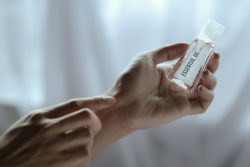How to Use Aromatherapy to Ease Withdrawal Symptoms
The National Cancer Institute reports that the use of fragrant plants to heal has been going on in many cultures for thousands of years. You might associate the practice with Chinese, Indian, and Egyptian culture. Perhaps you think of incense burning or fragrant oils dropped in diffusers. There are a lot of cultural links between smell and medicine, even though plant oils weren’t actively used until the Middle Ages.
French chemist René Gattefosse first used the term “aromatherapy” in the early 20th century. He studied the impact of essential oils on a variety of diseases. Later, in the 1980s and 1990s, Western countries started being interested in alternatives to their medical practices. Techniques like yoga and meditation began to be used again, as did aromatherapy.
A lot of people who are tied to traditional medicine are prone to writing off alternatives. But there is support for the use of aromatherapy in general and for its use in treating addiction with detox, specifically. It can be an important component in addiction recovery.
Call Detox.com to find detox centers that incorporate aromatherapy!
What Is Aromatherapy?
On its most basic level, aromatherapy is just smelling essential oils to enjoy their therapeutic benefits. The most fragrant parts of plants (things like bark, peels, and leaves) are used to extract the oils. The oils in the plants are then distilled. Some oil providers do this with water and/or steam, and others do it by pressing very hard.
According to the University of Minnesota, “Research studies on essential oils show positive effects for a variety of health concerns including infections, pain, anxiety, depression, tumors, premenstrual syndrome, nausea, and many others.”
How Aromatherapy Affects Your Brain

Aromatherapy triggers the reward center of the brain.
Your addiction is triggered by impulses in your brain, and so is your sense of smell. Aromatherapy works because it acts on the same parts of your brain that your addiction does. Detox is all about clearing drugs from your system and beginning to break the hold addiction has over you and your brain, so distracting the pleasure centers of the brain and refocusing them on aromas can help limit detox symptoms.
Your limbic system is part of your brain’s reward center, and it’s where memories are created and stored. It is what makes using drugs become an obsession. The drugs make the limbic system send out euphoric chemicals and the brain starts zinging with pleasure. When this happens, your brain makes a memory of the source of the pleasure and, over time, the brain begins demanding access to that pleasure repeatedly.
When you smell fragrances, your reward system also pings. Just consider the pleasure that smelling a good meal or your lover’s scent can cause. When you use aromatherapy, you can get your brain to release feel-good chemicals without using drugs, and that can help you cope with detox.
Which Aromatherapy Oils Help with Withdrawal Symptoms?
Detox causes a lot of withdrawal symptoms. Some of the most common include:
- Anxiety
- Muscle aches
- Insomnia
- Abdominal cramping
- Diarrhea
- Goosebumps or chills
- Nausea
- Vomiting
Aromatherapy can help because there are essential oils that address these symptoms and alleviate them.
- To calm tension, try: bergamot, chamomile, grapefruit, lavender, lemon, and orange
- To lessen nausea, try: peppermint and ginger
- To relieve insomnia, try: lavender, chamomile, and rosemary
- To treat muscle pains, try: clove, grapefruit, orange, and rosemary
- To increase energy, try: bergamot, lemon, and orange
The type of blends you use and the degree to which they soothe and treat you will depend on the skill of the aromatherapist creating them. You can try creating your own routine, or you can use existing blends from retailers.
There are several simple ways to incorporate aromatherapy into your life:
- Indirect inhalation: use a room diffuser or place drops nearby
- Direct inhalation: use an individual inhaler with drops floated on top of hot water
- Aromatherapy massage: rub essential oils, diluted in a carrier oil, into the skin
- Combine aromatherapy oils with bath salts, lotions, or dressings
If you would like information about more tools and resources for your addiction recovery, call 800-996-6135 .
Sources
- National Cancer Institute. (2018). Aromatherapy and Essential Oils (PDQ®)–Patient Version: Questions and Answers About Aromatherapy.
- University of Minnesota. (n.d.). What Does the Research Say About Essential Oils?
- National Cancer Institute. (2018). Aromatherapy and Essential Oils (PDQ®)–Patient Version: Overview.
- National Cancer Institute. (2018). Aromatherapy and Essential Oils (PDQ®)–Patient Version: Questions and Answers About Aromatherapy: 1. What is aromatherapy?

